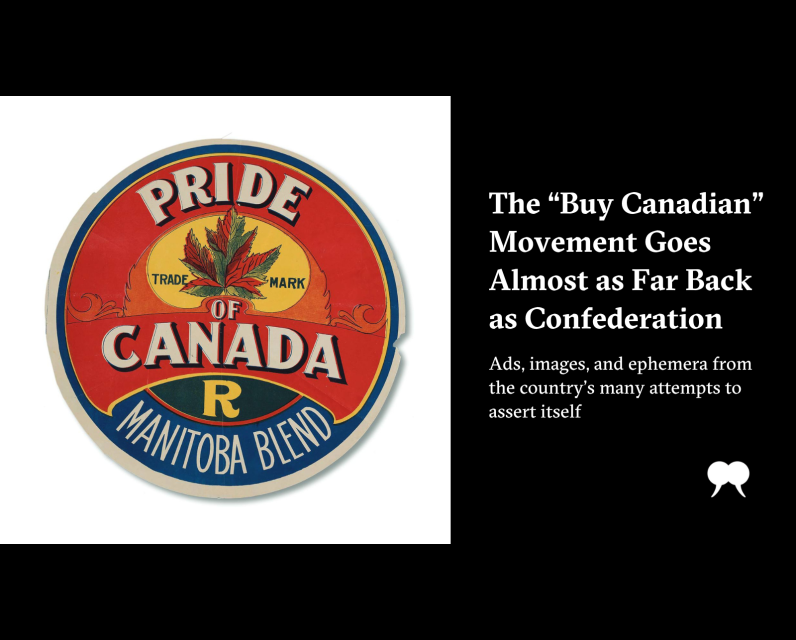The “Buy Canadian” Movement Goes Almost as Far Back as Confederation

.main_housing p > a { text-decoration: underline !important; }
.th-hero-container.hm-post-style-6 { display: none !important; }
.text-block-underneath { color: #333; text-align: center; left: 0; right: 0; max-width: 874.75px; display: block; margin: 0 auto; } .text-block-underneath h4{ font-family: "GT Sectra"; font-size: 3rem; line-height: 3.5rem; } .text-block-underneath h2{ font-size: 0.88rem; font-weight: 900; font-family: "Source Sans Pro"; } .text-block-underneath p { text-transform: uppercase; } .text-block-underneath h3{ font-family: "Source Sans Pro"!important; font-size: 1.1875rem; font-weight: 100!important; }
.flourish-embed { width: 100%; max-width: 1292.16ppx; }
.th-content-centered .hm-header-content, #primary.content-area { width: auto; } .entry-content p, ul.related, .widget_sexy_author_bio_widget, .widget_text.widget_custom_html.widget-shortcode.area-arbitrary { margin-left: auto; margin-right: auto; } .hitmag-full-width.th-no-sidebar #custom_html-45.widget { margin: auto; } @media only screen and (max-width: 768px) { .img-two-across-column{ flex-direction: column; } .img-two-across-imgs{ width: auto !important; max-width: 100%!important; padding:0px!important; } .main_housing, .text-block-underneath { margin-left: 25px !important; margin-right: 25px !important; } .text-block-underneath h4{ font-family: "GT Sectra"; font-size: 35.2px; line-height: 38.7167px; } } @media only screen and (min-width: 2100px) { .main_housing, .text-block-underneath { margin-left: 32% !important; margin-right: 32% !important; } } @media only screen and (max-width: 1200px) { .main_housing, .text-block-underneath { /* margin-left: 25px !important; margin-right: 25px !important; */ } } @media only screen and (max-width: 675px) { .main_housing, .text-block-underneath { margin-left: 10% !important; margin-right: 10% !important; } } .hero-tall {display: none;} .hero-wide { display: block; } @media (max-width:700px) { .hero-wide { display: none; } .hero-tall { display: block; } } ARTS & CULTURE / JULY/AUGUST 2025 The “Buy Canadian” Movement Goes Almost as Far Back as Confederation Ads, images, and ephemera from the country’s many attempts to assert itself BY ARTHUR DENNYSON HAMDANI
Published 6:30, June 30, 2025 Manitoba Blend flour mills poster from around 1890 (All photos courtesy of Toronto Public Library)
“BUY GOODS MADE IN CANADA,” reads a postage stamp. “Be SURE your money goes into Canadian pockets,” recommends a gin advertisement. These words sound like a response to the tariffs and annexation threats posed by US president Donald Trump this year, but they were printed more than a century ago. The images and slogans are part of the Baldwin Collection of Canadiana, tucked deep inside the Toronto Reference Library. The holdings include over 28,000 ephemera focused on Canadian history dating back to the colonial period—one of the oldest advertisements is a Manitoba Blend flour mill label from around 1890. Many of the posters and ads carry messages of Canadian unity; taken together, the bold illustrations tell the story of Canada’s early attempts to distinguish itself as a nation.
As the country gradually took greater control over its own affairs from Britain, one of the key moments in shaping national identity came during the First World War. Wartime campaigns encouraged citizens to buy Canadian, with slogans and advertisements promoting domestic goods, and even a “Made in Canada Campaign Song” was performed at Toronto’s Massey Hall. Posters in both English and French urged civilians to purchase victory bonds—part of the government’s effort to fundraise for the war—and appealed to Canadians’ patriotism. Between 1915 and 1919, the campaign raised over $2 billion, far beyond what the government expected, deepening a sense of collective purpose.
Yet, even as national pride took root, Canadian identity was still in flux. Since 1890, Canada had been dogged by American economic pressures, beginning with Republican congressman, and later president, William McKinley’s near 50 percent tariff on imports. Decades of negotiations followed, eventually leading to free trade agreements almost a century later, but anxiety over dependence on the US persisted—shaped not only by politics but also geography and population size.
With the vast majority of Canadians living within 160 kilometres of the US–Canada border, proximity has blurred cultural and economic boundaries. This closeness has allowed American ideas, popular culture, and economic influence to spill into Canadian life, especially in English-speaking regions. Some scholars use the idea of a “borderlands” culture as the lens through which Canadian identity can be understood, not in isolation but in dialogue with our neighbour.
Traces of this evolving identity, and of the efforts to assert economic independence, are preserved in the Baldwin Collection. The examples we’ve rounded up offer a vivid record of the cultural campaigns that have tried to define what it means to be Canadian in the shadow of a powerful neighbour.
A set of postage stamps from the Canadian Manufacturers’ Association, from around 1920 A 1934 bookmark from Canada Foils Limited that also served as a product advertisement Sheet music from 1915 for “Made in Canada Campaign Song” that was performed at Massey Hall, Toronto A political cartoon from around 1890 commenting on tariffs, printed for “gratuitous distribution” A Melcher’s Red Cross Gin advertisement from 1914 The gin ad lists ten ways customers can “help Canada” A poster from 1918, from the Victory Loan Dominion Publicity Committee, encouraging (or shaming) Canadians to buy victory bonds A poster in French from the Victory Loan Dominion Publicity Committee’s campaign from around 1917 A notice poster from around 1918, from the Victory Loan Dominion Publicity Committee, outlining the benefits of buying bonds The post The “Buy Canadian” Movement Goes Almost as Far Back as Confederation first appeared on The Walrus.


Comments
Be the first to comment